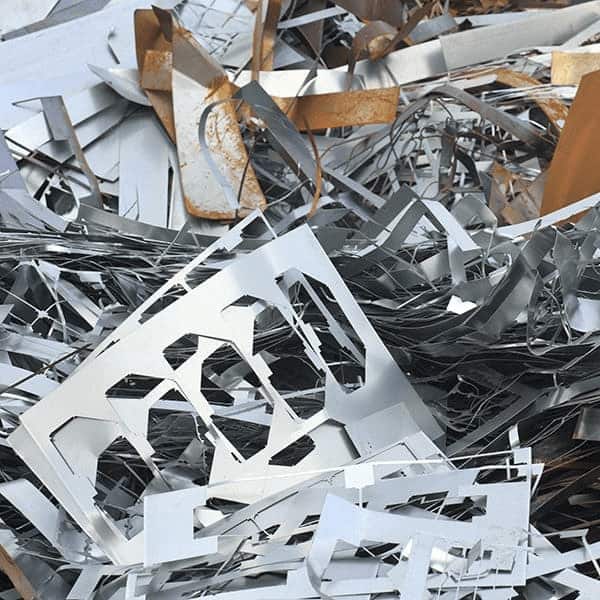Published via LinkedIn by Bruce Thomas, April 2021
Although a byproduct of the manufacturing process, scrap metal is most likely the only revenue generator a manufacturer has besides the products it makes.
Last year, we saw a laser cutting job shop and Tempus Tools customer gain $144k in revenue from selling their scrap metal. They were able to achieve this by treating their scrap as another valuable commodity to be sold, and monitoring and maximizing every aspect of their scrap program.
So how do you successfully run a profitable scrap program? The key is preparation and process.
Preparation
Preparing your scrap metal by organizing into material and grade will ensure you are getting the highest price for your scrap.
Grade 304 Stainless Steel and grade 316 stainless steel are the most popular and widely used types of stainless steel. Your scrap metal merchant will give you more for your 316 scrap, so it is important to keep these two types of steel in separate bins. If your 316 bin contains any amount of 304 steel, chances are you will end up receiving a payment for the bin’s value as 304 steel.
Different sizes of scrap will also fetch different prices, as they need to be processed differently:
Blanks: an uncut sheet of material.
Skeletons: a used sheet of material with parts cut out of it
Bushings: thin material under 300 by 300 millimetres/11.8 inches.
Insize: thick material under 300 by 300 millimetres/11.8 inches.
If kept separate and clean, bushings and insize will respectively fetch roughly 5% and 10% more than skeletons. Just like with materials, if it’s not clear what sizes a particular bin contains, you may receive a lower price than what you are selling is really worth.
It’s worth noting that not every scrap dealer has the same process – ask questions about their process and how best to handle outgoing scrap. Some scrap shops will pay more for skeletons that are cut down to smaller sizes. Adding remnant cuts in your nesting software keeps your scraps at a regular size, with the bonus of making it easier to manage around the shop.
For example, if you chop your skeleton 1 meter(3ft) by 1 meter, this will fit on a standard pallet. Strap the whole lot up and your good quality skeleton is looking more valuable to your scrap dealer.
Prepare your bins and ensure general waste bins are also available. Make sure your entire team is briefed on the location and use of each bin (you may want to consider sending monthly reminder emails). The last thing you want is for a valuable scrap bin to be polluted with cheap materials or general waste! to ensure you are all on the same page.
Process
Having a clear and consistent process for your scrap metal will enhance your overall operational efficiency. For example, when and how should the scrap bins be filled, and by whom? If the usual fork truck driver is sick, who will manage, transport, and sort scrap until he returns?
One method which is very effective to efficiently separate types of material is to colour-code your metal sheets. Keep a coloured spray can handy and as a pack comes in, spray the side to leave a coloured edge on the sheet, easy for you to later sort.

Once you’ve decided on a plan and a process for your scrap, it is strongly recommended to nominate someone in charge of overseeing the scrap process, trading, and negotiation. This eliminates any discrepancies and ensures consistency in operations and in revenue.
Bruce Thomas,
Executive (Product), Tempus Tools




